My series on why the Industry committee was right to ignore the Canadian Heritage committee study as part of the national copyright review has focused on process (the government vested sole responsibility with the Industry committee, its clear assertion as the authoritative copyright review, and an examination of the witness and brief list that confirms that Industry conducted a much more comprehensive consultation that overlapped with much of Heritage but also included hundreds of additional witnesses and briefs.
The raw numbers tell a compelling story:
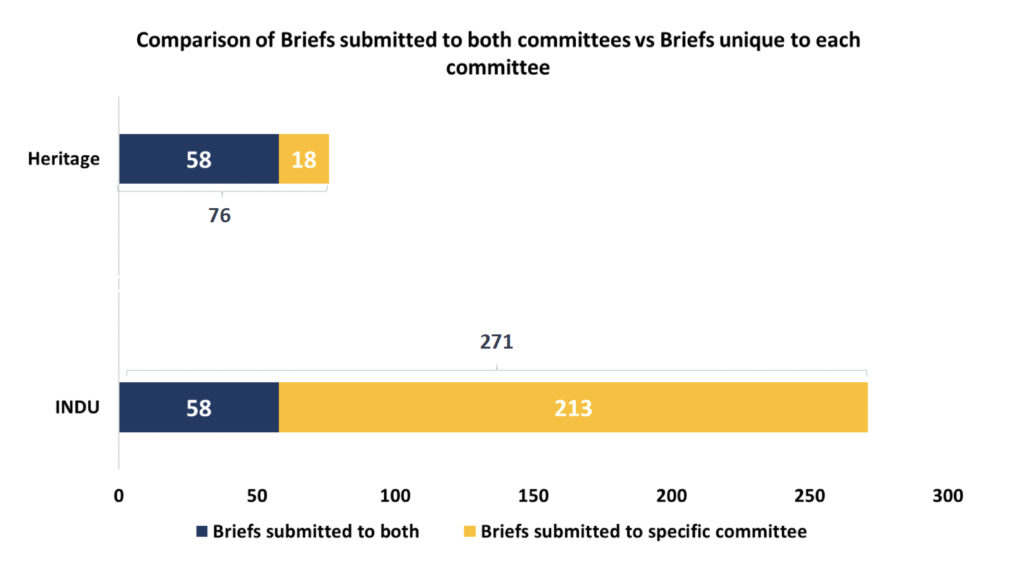
Brief comparison
- there were 203 organizations and individuals that appeared as witnesses before INDU vs. 79 for Canadian Heritage
- INDU also received far more briefs: 271 briefs went to INDU vs. just 76 to Heritage
- There was considerable overlap at Heritage, but far less with INDU: Heritage only saw 33 witnesses who did not appear before INDU and received just 18 briefs from organizations that did not also submit to INDU
Beyond those numbers, however, I examined the balance among witnesses to consider whether both committees made an effort to hear a wide range of perspectives consistent with the diverse views on copyright. The witness list is relevant in this regard since committees control who is invited to appear, whereas briefs may be submitted by anyone with an interest in the issue. The full list of witnesses with my designation – RH (rights holder/creator), U (user) or N (neutral) – can be accessed here. Rights holders/creators include cultural associations, copyright collectives, authors, musicians, and other creators. Users include educational groups, broadcasters, and some IT companies. Neutral witnesses include government officials. Designations are based on the positions adopted before committee as well as known positions on copyright policy issues.
The data shows that the Industry committee heard from more rights holders and creators than user groups, but was still relatively balanced: 52% of witnesses presented rights holder or creator perspectives, 45% presented user perspectives, and 3% neutral witnesses. In fact, the Industry committee heard from more witnesses representing rights holders and creators than all Heritage witnesses combined. By contrast, 80% of the witnesses before Heritage were rights holder and creator perspectives with only 16% – 14 witnesses – representing a user perspective.
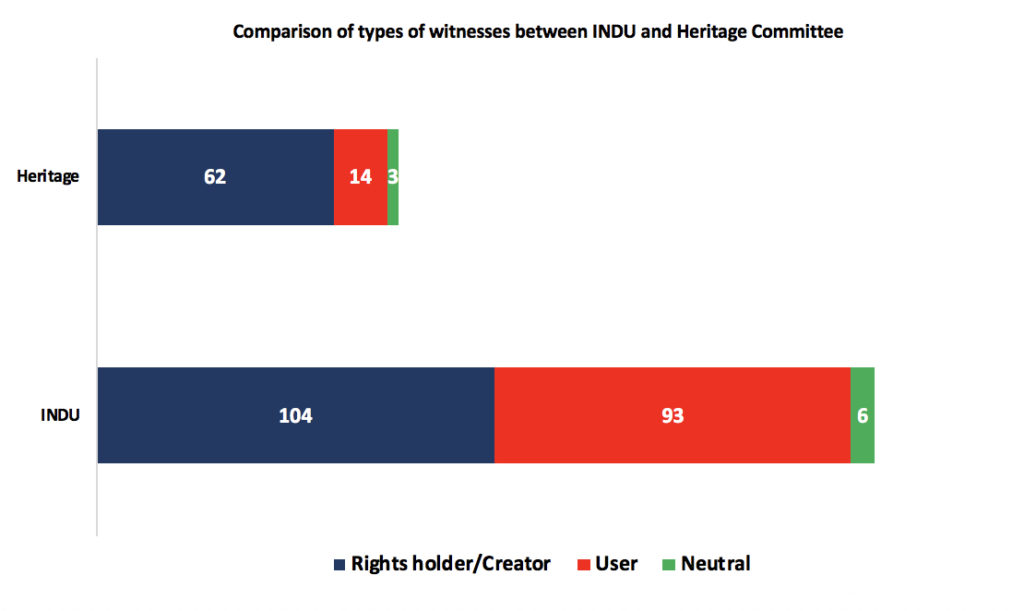
Witness comparison by type – INDU vs. CHPC
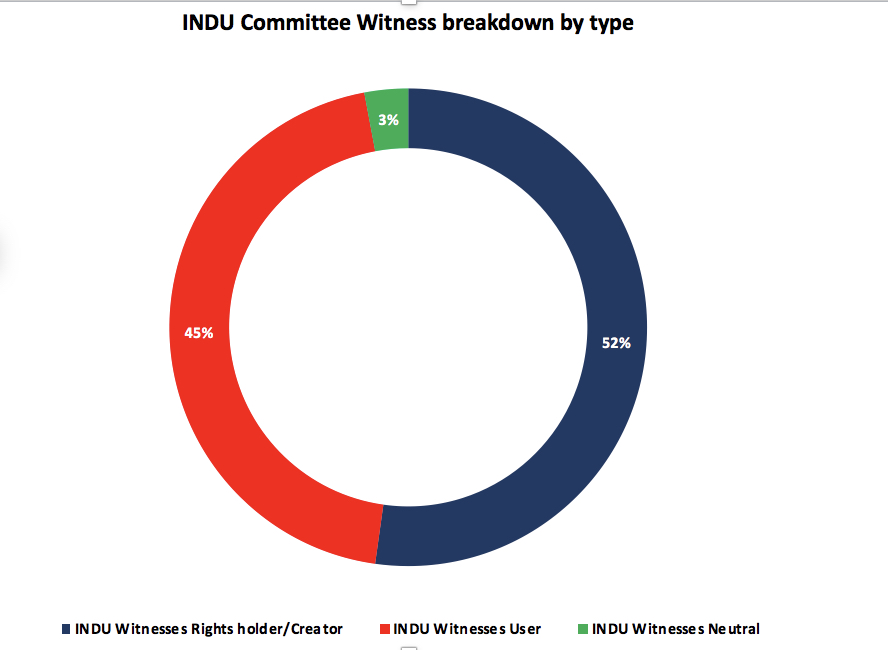
INDU witness breakdown by type
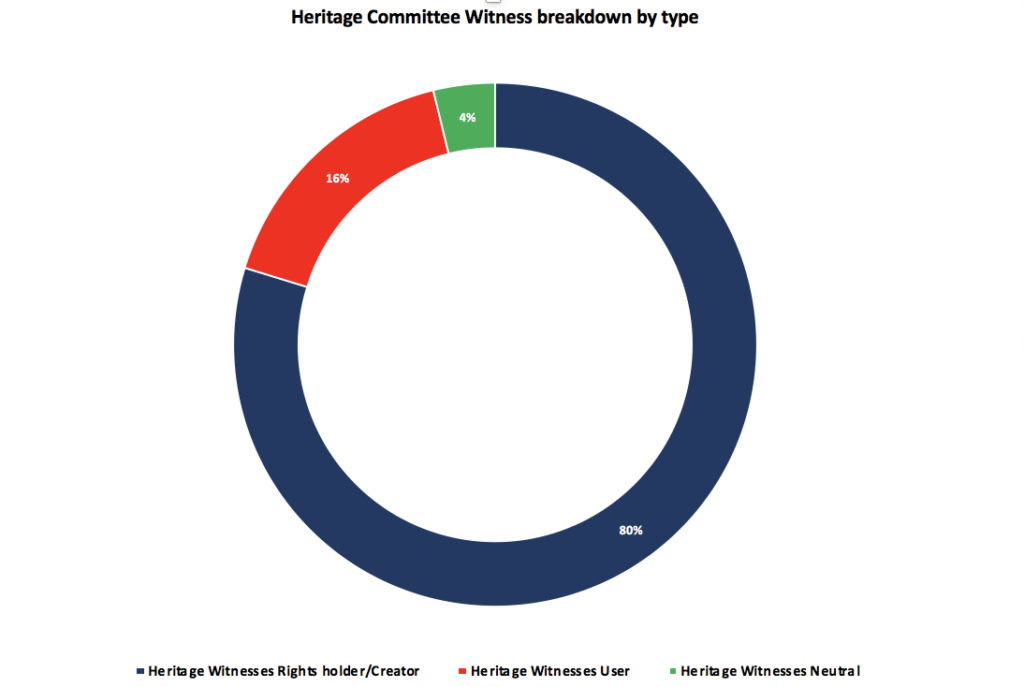
Heritage witness breakdown by type
Heritage supporters may argue that their goal was to hear from rights holders and creators and therefore the imbalance was warranted. That may be true if the objective was to hear one-side of the copyright story and produce a report containing their policy wish list. However, if the goal was to produce viable copyright reform recommendations that reflect the complexity of copyright policy, the approach was a failure.
Indeed, the effect of hearing predominantly one side of the issue has obvious implications for committee recommendations. For example, the Heritage committee recommended copyright term extension, noting:
No witnesses expressed outright opposition to extending of the copyright term from 50 to 70 years after death.
By any reasonable measure, the issue of extending the term of copyright from life of the author plus 50 years to life plus 70 years is controversial. The Industry committee heard from all perspectives and concluded that caution was warranted. Yet Heritage’s list of witnesses was so one-sided that it failed to include any one opposing term extension. In doing so, it failed to hear from a representative range of stakeholders, leading to flawed, one-sided recommendations that are inconsistent with good policy making and the objectives of the Copyright Act that emphasize the interests of both creators and users.
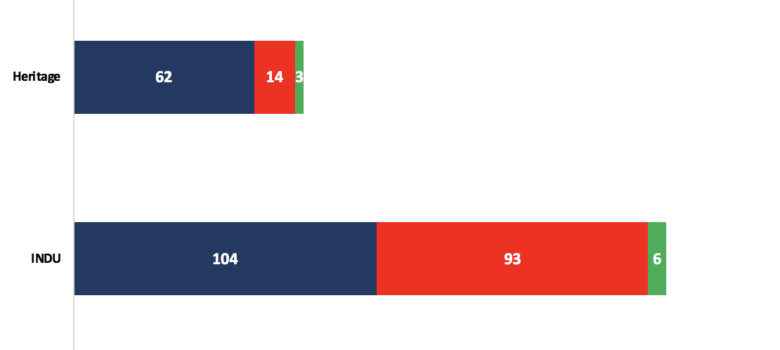







I always appreciate your good work. Thank you for providing a yin to our corporate yang…
Pingback: News of the Week; June 26, 2019 – Communications Law at Allard Hall
That was… unexpectable